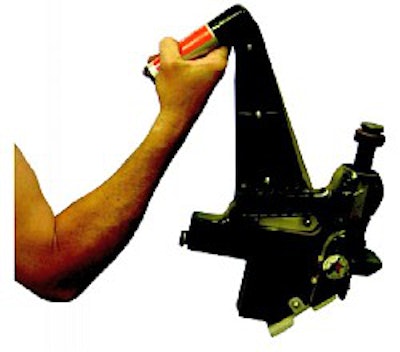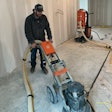

I played water polo in high school and college. After summer vacation, our two-week training camp would start in early September. It was tough. Twice a day, for two hours per session, we would swim laps, pass the ball, practice our skills, shoot goals,lift weights and work on our offensive and defensive techniques. When I first arrived at camp, my ball handling was always rusty. But, as I trained, I got better and actually improved over the level I had achieved the previous season.
After our skills returned to a competent level,our coach would show us new ways to improve. We practiced new skills until they became easy. He would watch us practice and give us feedback on our progress, often getting in the water to show us how to better execute the moves. Throughout the season, our coach would repeatedly teach us more strategies to make us better players and a better team. By the end of every season,we had learned lots of new skill sand tricks we could use to help us outwit and outscore the competition. Due to his relentless pursuit of perfection, our coach always built winning teams with near-perfect records.
Getting Rusty?
Do you wish your field crews and supervisors were as good as you. Do they often struggle and fail to do things the way you want them done. Are your people as efficient as they should be. Do your employees sit and wait for their supervisors to make simple decisions for them. Do they constantly improve and try new and better ways to do things. Do your employees like to make changes and master new tasks.
Your hardwood flooring contracting business is exactly like my experience with competitive sports. Without ongoing training and practice, employees get rusty, become out of shape and don't improve to the next level. They get used to doing the same old things, the same old way, at the same level. And, they won't change and usually won't try new ideas on their own unless they have no choice. This is where a training schedule comes in. Training is the best method to motivate your employees, improve their skills and take them to the next level of craftsmanship. Every water polo season, I would swim faster than the previous year,and my 100-yard freestyle time would improve at least5 percent as a result of my ongoing training schedule. Your employees can reap the same benefits—excellence and higher proficiency—from ongoing training.
Climb to the Top
I recently surveyed more than 2,000 contractors and business owners. More than 98percent said their employees would do a better job if they provided more training for their employees. But, this awareness doesn't lead to action. The survey results show how much training per year, per employee, companies actually provide:
For field employees:
• 51 percent perform zero to eight hours of training
• 20 percent perform nine to 16 hours of training
• 19 percent perform 17 to 40 hours of training
• 10 percent perform more than 40hours of training.
For management employees:
• 35 percent provide zero to eight hours of training
• 25 percent provide nine to 16 hours of training
• 20 percent provide 17 to 40 hours of training
• 20 percent provide more than 40hours of training.
For their field employees, 51 percent of companies don't make training a priority, providing between zero and eight hours of training per year, per employee. Only 10 percent of companies invest 40 hours of training per year in their field employees. Surprisingly, 35percent of companies offer less than eight hours training for management personnel per year. And, only 20 percent train their managers 40 hours or more. This is in direct contrast with more than 80 percent of the top 500major companies in America, which average more than 40 hours of training per year, per employee!
Most companies surveyed train their management employees more than their field crews. This doesn't make sense, since contracting companies make or lose most of their money on the job site, not back in the office. Quality, service, productivity—most of it happens out in the field. When firms spend more on training for their office employees, field employees and their contributions to the bottom-line are not properly valued.
No Training is Draining
As contracting and flooring companies grow, the owner usually takes on more work than he (or she) can handle alone. So, he hires some help to assist him. Then, as the company lands more customers and jobs, the installation crew has to get bigger to handle the daily job requirements. This added workload makes it difficult for the owner to take the time to find good or experienced help to whom he can delegate responsibility. He knows he should train his people, but doesn't make it a priority. He is too busy to train and too busy to be a tall the job sites all the time. What should he do. Most business owners continue trying to stay in control and make every decision. This never works,as employees are then under-utilized,held back and not allowed to grow. As a result, field productivity decreases while job costs increase. Then, good employees leave for better opportunities and better companies that make people their top priority.
Productivity in contracting is at an all-time low compared with other industries. The average field worker or installer only averages between 4.8to 5.5 hours per day doing productive work. The other two or three hours are spent waiting for the boss to show him or tell him what to do, looking busy, correcting mistakes, waiting for materials, waiting for decisions or working with the wrong tools or equipment.
Most smaller and growing companies don't have formal training programs. Consider the old method of distributing job information via blueprints and order forms versus today's laptop computers, PDA, e-mail and project Web sites. In today's high-tech, high-speed business environment, people need to learn and improve 50 percent every four years just to stay even. Maybe your firm is toobusy to train because you expect people to learn in a vacuum, or by the trial-and error method, or from their previous boss at their last company.
People want to make meaningful contributions on the job. They want to be recognized for their efforts. They need training to keep up and additional training to excel. If they don't get the training and tools they need, they won't accept responsibility for the quality and productivity of the work they do, and they won't grow into productive team players.
The Investment
To improve productivity and stay ahead of the competition, your ongoing company training program must provide a minimum of 40 hours of training per year for every employee. The total cost for an effective training program is2 percent of your payroll (40 hours divided by 2,000 hours per year equals2 percent). Studies show the return on40 hours of training per year can be 5 to15 percent in improvement in bottom line productivity. At a 5 percent return,your training program will save 100hours per employee per year. That's real money! Here's a breakdown:
Training Cost:
Employee Cost = $35/hour
Training Cost @ 40 hours per year =$1,400
Productivity Improvement:
Total Hours Hours per Year Worked =2,000 hours
Productivity Improvement @ 5 percent = 100 hours
Productivity Improvement = $3,500
Net Cost Saved via Training = $2,100per year
A 10 percent improvement will save$4,100, and a 15 percent productivity improvement from an effective training program will return $6,300 per employee per year.
On Company Time
One of my favorite slogans is: "It's O.K. to improve our company on company time!" The first decision to start an effective training program is to do it on company time during regular working hours. You can't afford not to train, and it must be a mandatory priority for everyone. Every week (I prefer to train on Tuesday mornings),spend 30 to 45 minutes training every employee on every job site and/or department.
Getting started is simple. Call a team meeting to select and prioritize your 52weekly training topics for each company department. List the top 52 things you must do perfectly to build a great company. These are your top training topics. Management how-to topics can include time cards, change orders, cost reports, purchases, contracts, proposals, estimates, negotiating, customer relationships, selling or financials. Field topics can include safety, installation methods, material handling, equipment operation, tools, blueprint reading, layout or goal setting.
Bosses, Step Back!
In our company, we try to cover the same basic topics each year, plus new topics and innovative ideas. Conduct training sessions in an interactive setting versus the old classroom-style of teaching where the teacher only tells the people what to do. Think coaching versus teaching and telling. Coaches show how and give feedback.
In a group setting, select different people to lead the weekly training sessions, so everyone gets a chance to teach. Assign topics to individuals based on their experience and skill. Use outside instructors when introducing new or technical subjects. Get people to participate, try the tools, use the equipment and do it until they get it right.
Use these seven steps to training:
1) Tell people how to do it.
2) Show them how to do it.
3) Let them do it.
4) Watch the results.
5) Coach the participants.
6) Give feedback, and correct mistakes.
7) Recognize those who do a good job.
Work Together,Learn Together
Off-site seminars and workshops can be excellent training opportunities as well,but make sure the programs offer more than just listening to an instructor. Good training involves interaction,doing, coaching and feedback. As a speaker at several company meetings every year, a problem I often see is that the agenda includes training sessions,but no real learning happens. Some companies try to do all their training atone big annual meeting for their entire staff. The audience watches boring technical presentations, or a company manager reads information to the group. The audience doesn't participate in activities or provide input, and therefore doesn't learn how to implement the new skills being taught. They sit there,listen and try to stay awake. And then,back on their job the next day, they continue to do their work exactly as they did before.
I also speak at a lot of great annual meetings and conventions where effective learning takes place. Annual meetings can be great training opportunities when combined with the weekly training sessions. Use your annual meetings for real training, feedback, fun, motivation,rewards, excitement and recognition(See "NWFA Training Opportunities"sidebar, page 46).
Working together to learn and improve each week fosters team spirit and enthusiasm. Give your people weekly opportunities to perform, opportunities to learn and chances to train others. The return to your company in productivity,quality work, motivation and staff loyalty will be exponential. The end result of an ongoing and effective training program will be no pain and lots of gain!






























